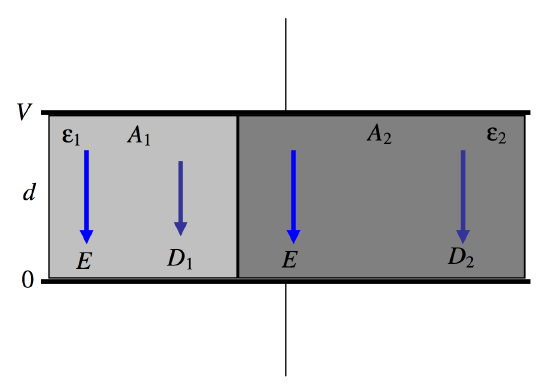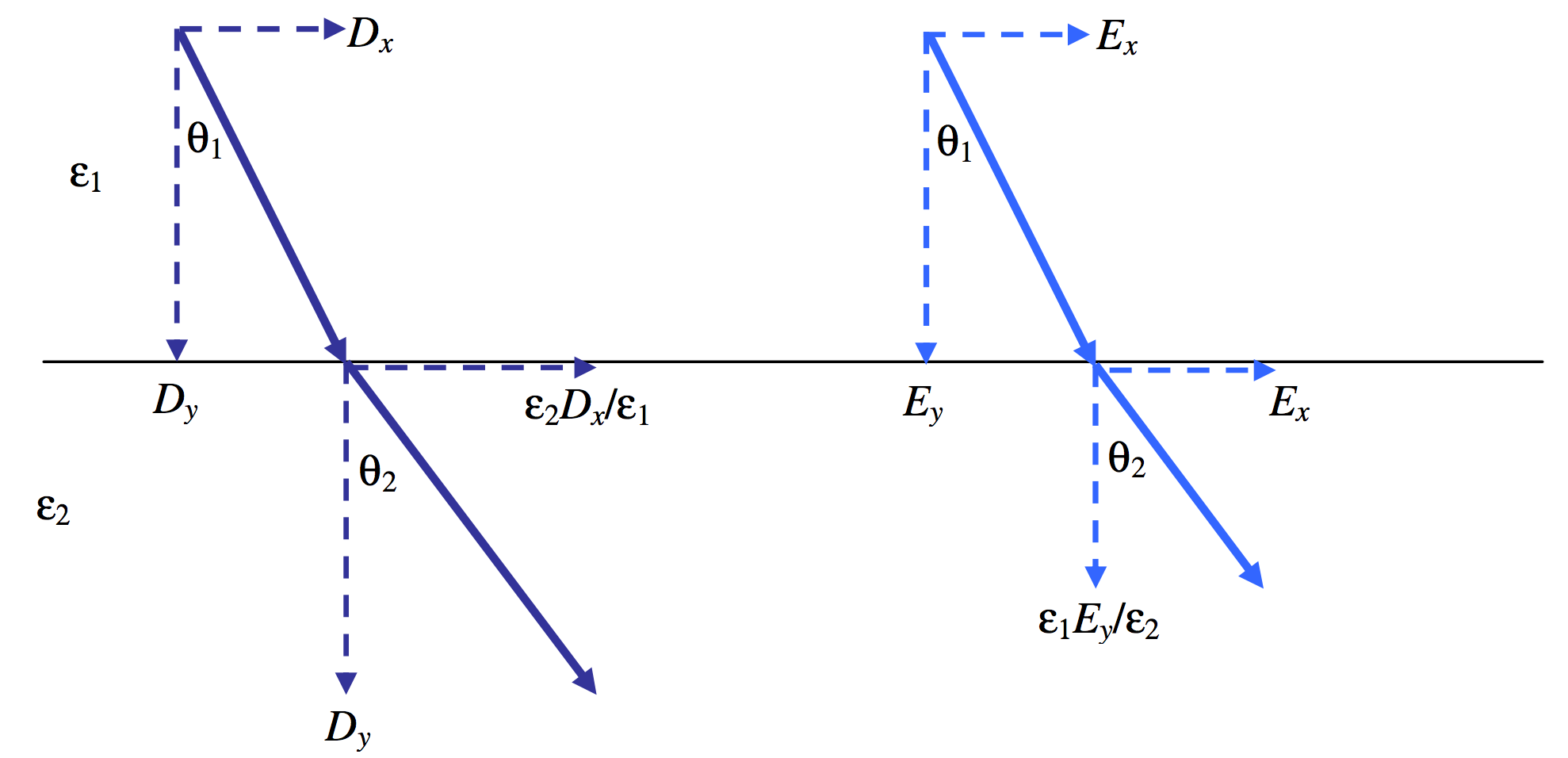5.14: Mixed Dielectrics
( \newcommand{\kernel}{\mathrm{null}\,}\)
This section addresses the question: If there are two or more dielectric media between the plates of a capacitor, with different permittivities, are the electric fields in the two media different, or are they the same? The answer depends on
- Whether by “electric field” you mean E or D;
- The disposition of the media between the plates – i.e. whether the two dielectrics are in series or in parallel.
Let us first suppose that two media are in series (Figure V.16).

FIGURE V.16
Our capacitor has two dielectrics in series, the first one of thickness d1 and permittivity ϵ1 and the second one of thickness d2 and permittivity ϵ2. As always, the thicknesses of the dielectrics are supposed to be small so that the fields within them are uniform. This is effectively two capacitors in series, of capacitances ϵ1A/d1 and ϵ2A/d2. The total capacitance is therefore
C=ϵ1ϵ2Aϵ2d1+ϵ1d2.
Let us imagine that the potential difference across the plates is V0. Specifically, we’ll suppose the potential of the lower plate is zero and the potential of the upper plate is V0. The charge Q held by the capacitor (positive on one plate, negative on the other) is just given by Q=CV0, and hence the surface charge density σ is CV0/A. Gauss’s law is that the total D-flux arising from a charge is equal to the charge, so that in this geometry D=σ, and this is not altered by the nature of the dielectric materials between the plates. Thus, in this capacitor, D=CV0/A=Q/A in both media. Thus D is continuous across the boundary.
Then by application of D=ϵE to each of the media, we find that the E-fields in the two media are E1=Q/(ϵ1A) and E2=Q/(ϵ2A), the E-field (and hence the potential gradient) being larger in the medium with the smaller permittivity.
The potential V at the media boundary is given by V/d2=E2. Combining this with our expression for E2, and Q=CVand Equation ???, we find for the boundary potential:
V=ϵ1d2ϵ2d1+ϵ1d2V0.
Let us now suppose that two media are in parallel (Figure V.17).

FIGURE V.17
This time, we have two dielectrics, each of thickness d, but one has area A1 and permittivity ϵ1 while the other has area A2 and permittivity ϵ2. This is just two capacitors in parallel, and the total capacitance is
C=ϵ1A1d+ϵ2A2d
The E-field is just the potential gradient, and this is independent of any medium between the plates, so that E=V/d. in each of the two dielectrics. After that, we have simply that D1=ϵ1E and D2=ϵ2E. The charge density on the plates is given by Gauss’s law as σ=D, so that, if ϵ1<ϵ2, the charge density on the left hand portion of each plate is less than on the right hand portion – although the potential is the same throughout each plate. (The surface of a metal is always an equipotential surface.) The two different charge densities on each plate is a result of the different polarizations of the two dielectrics – something that will be more readily understood a little later in this chapter when we deal with media polarization.
We have established that:
- The component of D perpendicular to a boundary is continuous;
- The component of E parallel to a boundary is continuous.
In Figure V.18 we are looking at the D-field and at the E-field as it crosses a boundary in which ϵ1<ϵ2. Note that Dy and Exare the same on either side of the boundary. This results in:
tanθ1tanθ2=ϵ1ϵ2.

FIGURE V.18


